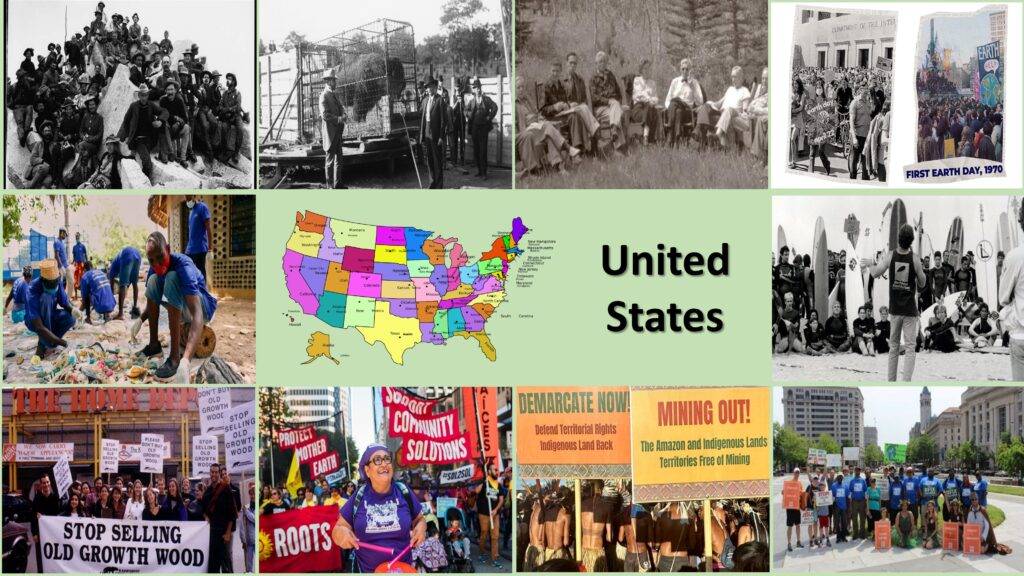
Many environmental movements have been started to protect the environment from various threats. Whereas, some of the movements are working together to shape the world through various activities and awareness. From local efforts to global agreements, each movement plays a big part in helping us to take care of our planet for the future. Here are the stories behind 10 Major Environmental Movements in the United States. It also includes inspiration, achievements, activities and shared effort to keep our planet safe for upcoming generations.
Table of Content
- Sierra Club
- Wildlife Conservation Society
- The Wilderness Society
- Earth Day
- Ocean Conservancy
- Surfrider Foundation
- Rainforest Action Network
- Amazon Watch
- Dogwood Alliance
- 350.org
1. Sierra Club
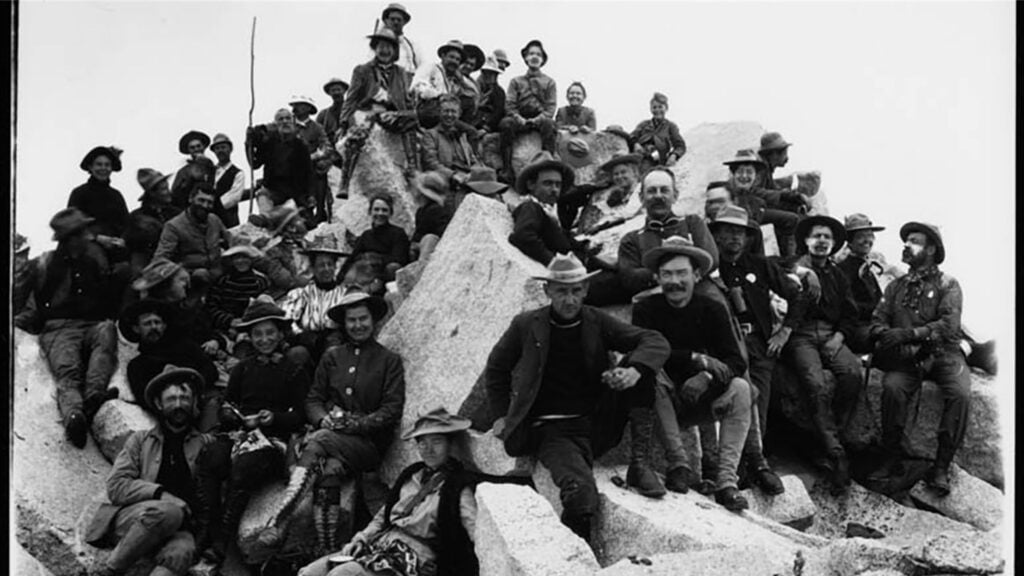
- Year Started: 1892
- Place of Origin: San Francisco, California
- Founder and Leadership: John Muir
- Objectives: To conserve and protect the natural environment, advocate for sustainable practices, promote responsible outdoor recreation and provide environmental education. They also help in legal action for resource protection and to raise public awareness.
A nature lover, John Muir was worried about how factories and cities were changing the land in America. Muir and some friends started the Sierra Club to save the Sierra Nevada mountains in California. They helped to create Yosemite National Park in 1890, which was the first national park in the United States. The Sierra Club does a lot to take care of nature, speak up for outdoor fun, and make sure the Earth stays safe. Among 10 major environmental movements in the United States, the Sierra Club is the first recognised in the world to protect the environment.
Activities and Initiatives
- Conservation as a Core Value: At the heart of the Sierra Club’s philosophy is a deep-seated commitment to conservation. The organization believes in balancing human needs with environmental preservation and advocating for policies that safeguard natural habitats. In addition, they promote clean energy and help to mitigate the impact of human activities on the planet.
- Diverse Advocacy and Campaigns: The Sierra Club engages in a spectrum of environmental causes. They are addressing issues ranging from air and water quality to wildlife protection and climate change. The organization’s campaigns are marked by a combination of grassroots activism, legal advocacy, and also public awareness initiatives.
- Promotion of Biodiversity and Public Lands: The Sierra Club has been instrumental in the establishment and expansion of national parks and protected areas. The organization actively supports initiatives to conserve critical habitats, ensuring that future generations can experience the richness of the natural world.
- Leadership and Influential Figures: Over the years, the Sierra Club has been steered by influential leaders such as John Muir, David Brower, and more. These figures have played pivotal roles in shaping the organization’s strategies, contributing to its longevity and impact on the environmental movement.
- Renewable Energy Advocacy: In response to the modern challenge of climate change, the Sierra Club has shifted focus to renewable energy advocacy. The organization promotes clean energy solutions and fights against fossil fuel projects. In addition, they actively support the transition to a sustainable, low-carbon future.
Major Achievements
- The Sierra Club’s dedication to legal action has resulted in landmark victories that have shaped environmental policy. Despite challenging destructive development projects, they are fruitfully advocating for stronger environmental regulations. In addition, their legal work has had a big impact on the way we think about protecting nature.
- They played a crucial role in the passage of the Wilderness Act of 1964 and the Clean Air Act of 1970. The organization has also been active in legal battles to protect public lands and challenge environmentally harmful policies.
2. Wildlife Conservation Society
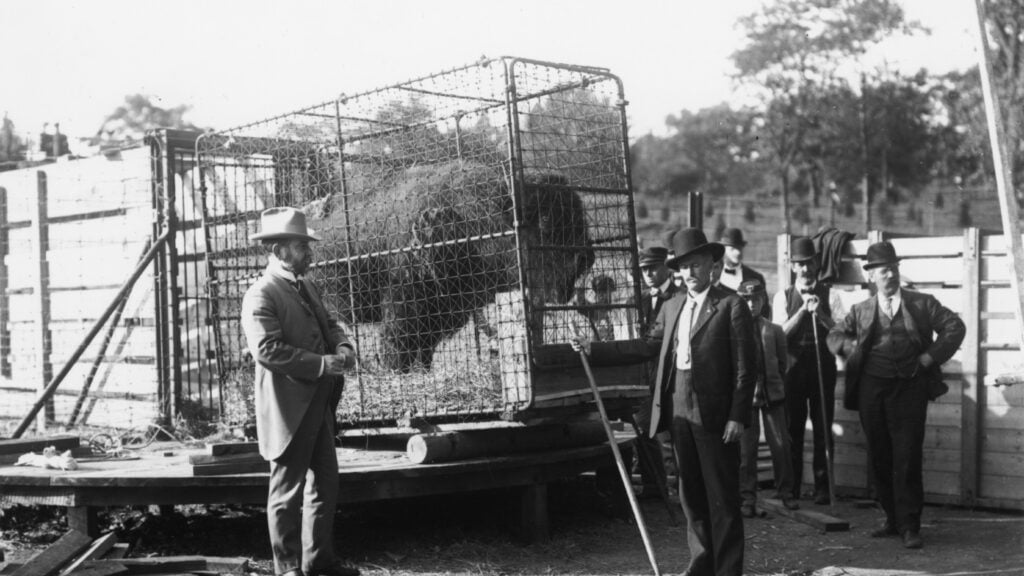
- Year Started: 1895
- Place of Origin: New York City
- Founder and Leadership: Andrew H. Green, Henry Fairfield Osborn, and Madison Grant
- Objectives: To conserve the world’s wildlife and wild places through science, field-based conservation initiatives, and engagement with local communities.
The Wildlife Conservation Society (WCS) holds a distinguished place in the realm of wildlife conservation. The organization’s enduring significance lies in its century-old commitment to the protection of wildlife and wild places. They are fruitfully addressing the challenges of biodiversity loss, habitat degradation, and also the conservation of iconic species across the globe.
WCS plays a vital role in conserving the world’s biodiversity through science, field research, and community engagement. Its mission encompasses wildlife protection, habitat conservation, and also the promotion of sustainable practices that balance human needs with the preservation of diverse ecosystems. Therefore, it has earned its place among the 10 major environmental movements in the United States.
Activities and Initiatives
- Field Conservation Programs: WCS conducts field conservation programs in diverse ecosystems, working closely with local communities and governments. These initiatives focus on protecting endangered species, preserving critical habitats, and mitigating threats such as poaching and habitat loss.
- Scientific Research: The organization engages in cutting-edge scientific research to understand wildlife behaviour, ecology, and the impacts of human activities on ecosystems. This research informs conservation strategies and contributes to global knowledge about biodiversity.
- Global Conservation Campaigns: WCS runs global campaigns to address overarching conservation challenges such as illegal wildlife trade, climate change impacts, and the establishment of protected areas. These campaigns aim to influence policies and promote international collaboration for effective conservation.
- Community Engagement and Education: WCS recognizes the importance of involving local communities in conservation efforts. Through community engagement and educational programs, the organization strives to build awareness, foster environmental stewardship, and ensure that conservation benefits both people and wildlife.
Major Achievements
- Establishment of Protected Areas: WCS has played a key role in the creation and management of protected areas worldwide. They significantly contribute to the conservation of diverse ecosystems and the protection of numerous species.
- Species Conservation Successes: The organization has been instrumental in the recovery of several species from the brink of extinction. Species include American bison, Siberian tiger, and mountain gorilla.
- Influencing Conservation Policies: WCS has actively influenced the development of conservation policies at national and international levels. In addition, they advocate for stronger protections for wildlife and their habitats.
3. The Wilderness Society
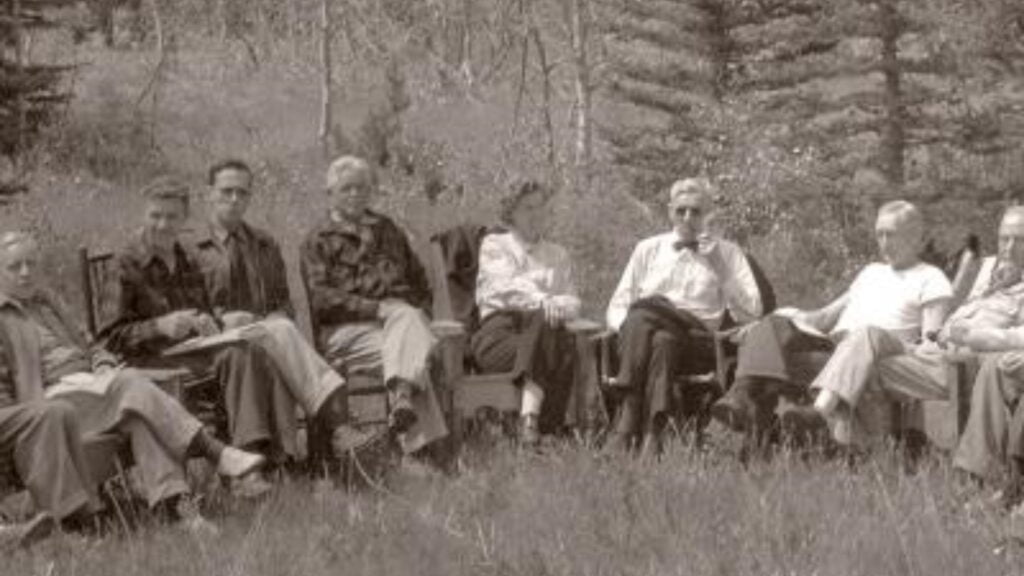
- Year Started: 1935
- Place of Origin: Washington, D.C.
- Founder and Leadership: Bob Marshall, Aldo Leopold, and Benton MacKaye
- Objectives: To advocate for the conservation of public lands, wildlife habitats, and natural landscapes.
The Wilderness Society emerged during a critical period in American history when concerns about the impact of industrialization on the nation’s natural landscapes were growing. Inspired by a shared vision of preserving untouched wilderness, the founders united to create an organization dedicated to the protection and stewardship of wild places.
The Wilderness Society holds a venerable place in the environmental movement, advocating for the protection of wild and pristine landscapes across the United States. With a rich history rooted in the early conservation efforts of visionaries like Bob Marshall and Aldo Leopold, the organization is significant for its dedication to preserving America’s wilderness for future generations.
The Wilderness Society plays a pivotal role in preserving and defending wild places. The organization’s mission revolves around safeguarding public lands, promoting sustainable land management, and also advocating for policies that balance conservation with recreational and economic interests. Therefore, it has rightfully earned its place among the 10 major environmental movements in the United States.
Activities and Initiatives
- Advocacy for Wilderness Protection: The Wilderness Society actively engages in campaigns and lobbying efforts to secure the designation of wilderness areas. Moreover, these areas are afforded the highest level of protection, preserving their natural and ecological values.
- Public Lands Stewardship: The organization works to ensure responsible and sustainable management of public lands. This includes advocating for policies that protect ecosystems, wildlife habitats, and scenic values while allowing for compatible recreational uses.
- Legislative Initiatives: The Wilderness Society participates in the development and promotion of legislation that advances conservation goals. This includes supporting bills that establish new wilderness areas, strengthen environmental regulations, and address emerging threats to public lands.
- Educational Programs: The organization engages in educational initiatives to raise awareness about the value of wilderness and the need for conservation. These programs aim to foster a deeper understanding of the ecological, recreational, and cultural importance of wild places.
Major Achievements
- Establishment of Wilderness Areas: The Wilderness Society has played a crucial role in the establishment of numerous wilderness areas across the U.S., ensuring the protection of diverse ecosystems, wildlife habitats, and natural landscapes.
- Landmark Conservation Legislation: The organization has been involved in advocating for landmark conservation legislation, including the Wilderness Act of 1964. This legislation created the National Wilderness Preservation System and set the framework for protecting designated wilderness areas.
- Protection of Threatened Ecosystems: The Wilderness Society’s advocacy efforts have contributed to the protection of threatened ecosystems, preventing destructive development and preserving the integrity of critical habitats.
4. Earth Day
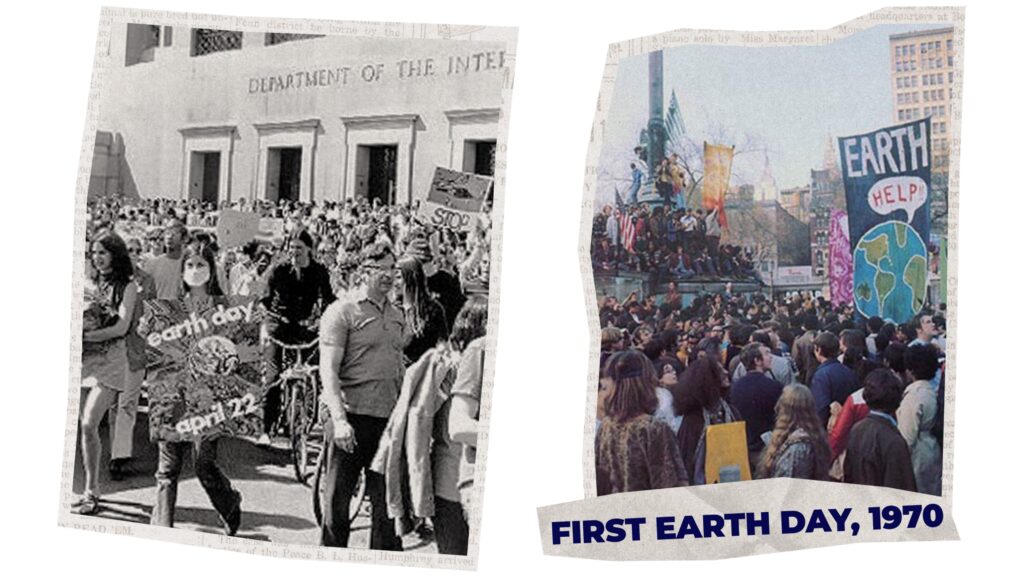
- Year Started: 1970
- Place of Origin: California
- Founder and Leadership: Gaylord Nelson and Denis Hayes
- Objectives: To increase the environmental awareness
Earth Day celebration was inspired by the success of the anti-Vietnam War movement. The goal of the celebration is to raise awareness about environmental issues and sustainable practices. Gaylord Nelson was eternally concerned about the environmental degradation and pollution that he witnessed.
The first Earth Day was celebrated on 22nd April 1970 across the United States as a part of the environmental movement. Millions of people came together to protest environmental degradation and advocate for a more sustainable and eco-friendly future. The movement helps the U.S. government to take significant legislative action with public support.
Subsequently, the Environmental Protection Agency was established and important environmental legislation was approved, such as the Clean Air and Water Act. The legal basis for environmental control and preservation in the US was established by these legislative actions.
Thereafter, Earth Day was globally celebrated to spread awareness. It serves as an annual reminder to address pressing environmental challenges. Moreover, it encourages individuals, communities, and governments to engage in sustainable practices. In addition, promote environmental education, and advocate for policies that protect the planet. Therefore, it occupies a position in the top 10 major environmental movements in the United States.
Activities and Initiatives
- Nationwide teach-in events were organised to inform and educate people about environmental issues and the importance of conservation.
- Awareness campaigns through the media to spread awareness about environmental concerns (e.g. pollution, deforestation and wildlife depletion)
- Protests advocating for environmental policies and regulations to address pollution and protect natural resources.
- Political engagement that led to the creation of the EPA.
- Cleanup and tree-planting initiatives
- Build up the Earth Day Network to coordinate global events and campaigns for environmental protection and sustainability.
Major Achievements
- It prompted the passage of landmark environmental laws including the amendment of the Clean Air Act and Clean Water Act 1972.
- It inspired the passages of the Endangered Species Act, 1973
- It inspired the creation of the Environmental Protection Agency (EPA) in 1986.
5. Ocean Conservancy

- Year Started: 1972
- Place of Origin: Washington, D.C.
- Founder and Leadership: Peter Benchley and Nancy Dolphin
- Objectives: To engage governments, businesses, communities, and also individuals to implement science-based solutions and policies to protect and restore ocean ecosystems.
Ocean Conservancy traces its origins to a collective vision among a group of passionate individuals who recognized the urgent need to address the mounting threats to ocean health. Inspired by a commitment to ocean advocacy and driven by a desire to bridge the gap between science and policy. For the same reason, the founders set out to establish an organization dedicated to the preservation of marine ecosystems.
Ocean Conservancy stands as a beacon for marine conservation, addressing critical issues such as overfishing, plastic pollution, and the protection of ocean ecosystems. With a founding vision centred on ocean advocacy, the organization has played a crucial role in raising awareness about the health of the oceans and also advocating for policies that promote sustainable practices.
Ocean Conservancy fulfils a pivotal role in safeguarding the world’s oceans, advocating for sustainable and science-based solutions to the challenges they face. The organization also serves as a bridge between scientific research and policy-making, aiming to ensure the long-term health and vitality of marine ecosystems. Therefore, it rightfully occupies a space within the recognized 10 major environmental movements in the United States.
Activities and Initiatives
- International Coastal Cleanup: Ocean Conservancy organizes the annual International Coastal Cleanup. This is one of the world’s largest volunteer efforts for ocean health. On this occasion, millions of volunteers globally participate in removing plastic debris and other pollutants from beaches and waterways.
- Fisheries Conservation: The organization actively engages in promoting sustainable fisheries management. They collaborate with fishermen, policymakers, and also with industry stakeholders to develop solutions that balance the needs of communities with the imperative of preserving fish populations and ecosystems.
- Marine Debris Solutions: Ocean Conservancy addresses the pervasive issue of marine debris, particularly plastic pollution. The organization works towards mitigating the impact of plastic on marine life through initiatives focused on reducing single-use plastics, promoting recycling, and advocating for policies to combat plastic pollution.
- Policy Advocacy: Through research and direct engagement with policymakers, Ocean Conservancy advocates for evidence-based policies that address the root causes of marine degradation. This includes advocating for marine protected areas, climate resilience, and sustainable ocean management.
Major Achievements
- International Coastal Cleanup Impact: The International Coastal Cleanup, initiated by Ocean Conservancy, has engaged millions of volunteers worldwide. The activities led to the removal of millions of pounds of trash from coastlines. They are also contributing to increased awareness about marine debris.
- Advancements in Sustainable Fisheries: The organization has played a key role in promoting sustainable fisheries management practices. These activities are significantly contributing to the solutions that balance the needs of the fishing industry with preserving ocean biodiversity.
- Leadership in Plastic Pollution Reduction: Ocean Conservancy’s efforts to combat plastic pollution have influenced public perception and policy discussions on single-use plastics. The organization has been instrumental in advocating for plastic reduction policies at national and international levels.
6. Surfrider Foundation

- Year Started: 1984
- Place of Origin: Malibu, California
- Founder and Leadership: Glenn Hening and Lance Carson
- Objectives: To protect and preserve the world’s oceans, waves, and beaches.
Surfrider Foundation emerged from a shared concern among surfers and environmentalists who witnessed the degradation of coastal environments. Motivated by a desire to protect the oceans and waves they loved, the founders united to create an organization that could effectively address the pressing issues threatening coastal ecosystems.
The Surfrider Foundation has been a leading force in coastal conservation, advocating for the protection of oceans, waves, and beaches. The organization holds immense significance in its dedication to preserving coastal ecosystems, addressing pollution, and championing the rights of beachgoers and surfers
Surfrider Foundation plays a pivotal role in defending coastal environments through a mission that combines grassroots activism, scientific research, and policy advocacy. With a focus on protecting oceans and beaches, the organization strives to ensure the sustainable use and enjoyment of coastal resources. Therefore, it rightfully occupies a space within the recognized 10 major environmental movements in the United States.
Activities and Initiatives
- Beach Cleanup Programs: Surfrider Foundation organizes numerous beach cleanup initiatives globally. They mobilise communities to remove litter and plastic debris from coastlines. These efforts aim to raise awareness about the impacts of pollution on marine life and ecosystems.
- Water Quality Monitoring: The organization conducts water quality monitoring programs to track pollution levels in coastal waters. Through scientific research and data collection, the Surfrider Foundation advocates for policies that improve water quality and protect public health.
- Rise Above Plastics Campaign: The organization advocates for reducing single-use plastics. To achieve this they started promoting recycling and raising awareness about the impact of plastics on marine environments.
- Coastal Preservation and Access: They work to protect coastal ecosystems from overdevelopment and pollution. The organization advocates for the preservation of natural shorelines and public beach access, ensuring that coastal areas remain accessible to the public.
Major Achievements
- Advocacy for Clean Water: The Surfrider Foundation has successfully advocated for policies and regulations that improve water quality at beaches, ensuring the safety of beachgoers and surfers.
- Coastal Preservation Campaigns: The organization has been instrumental in campaigns to protect coastal areas from excessive development, preserve natural habitats and also to maintain the integrity of coastal ecosystems.
- Plastic Reduction Policies: The Surfrider Foundation’s efforts have contributed to the adoption of plastic reduction policies at local and national levels. This influences businesses and also communities to reduce their reliance on single-use plastics.
7. Rainforest Action Network

- Year Started: 1985
- Place of Origin: San Francisco, California
- Founder and Leadership: Randy Hayes and Mike Roselle
- Objectives: To protect the world’s rainforests and the rights of indigenous communities by campaigning against deforestation, promoting corporate accountability, and also advocating for sustainable and socially just solutions to environmental challenges.
Rainforest Action Network (RAN) emerged from the shared concern of its founders about the escalating threats to rainforests and the communities dependent on them. United by a commitment to direct action and strategic advocacy, the founders established RAN to confront the root causes of rainforest destruction.
RAN holds profound significance as a grassroots organization committed to preserving forests, biodiversity, and the rights of indigenous communities. RAN’s origins lie in the urgent need to address deforestation, climate change, and the social injustices associated with resource extraction and logging in rainforest regions.
The RAN plays a vital role in challenging corporate practices that contribute to deforestation and environmental degradation. Its mission centres on advocating for sustainable forestry and protecting the rights of frontline communities. Thus, it has rightfully secured its spot among the 10 major environmental movements in the United States.
Activities and Initiatives
- Corporate Accountability Campaigns: RAN engages in high-impact campaigns targeting corporations contributing to deforestation. Through advocacy, protests, and dialogue, the organization pressures companies to adopt sustainable practices and halt environmentally destructive activities.
- Deforestation-Free Supply Chains: RAN advocates for companies to adopt deforestation-free supply chain commitments, encouraging sustainable sourcing of commodities such as palm oil, soy, and timber. The organization works to hold companies accountable for their environmental and social impacts.
- Indigenous Rights and Land Defense: Recognizing the vital role of indigenous communities as stewards of the rainforests, RAN actively supports efforts to defend their land rights. This includes advocating for the recognition of land tenure, resisting land grabs, and promoting community-led conservation.
- Climate Activism: RAN connects deforestation and climate change, highlighting the role of intact forests in sequestering carbon. The organization also advocates for policies that address the drivers of deforestation as a key strategy in the fight against climate change.
Major Achievements
- Corporate Policy Changes: RAN’s campaigns have led to significant policy changes by corporations. This includes commitments to zero deforestation, sustainable sourcing, and the protection of indigenous rights.
- Preserving Critical Ecosystems: The organization’s efforts have contributed to the preservation of critical rainforest ecosystems, preventing the destruction of biodiversity-rich areas.
- Community Empowerment: RAN’s support for indigenous communities has empowered them to resist destructive activities on their lands and assert their rights as guardians of the rainforests.
8. Amazon Watch
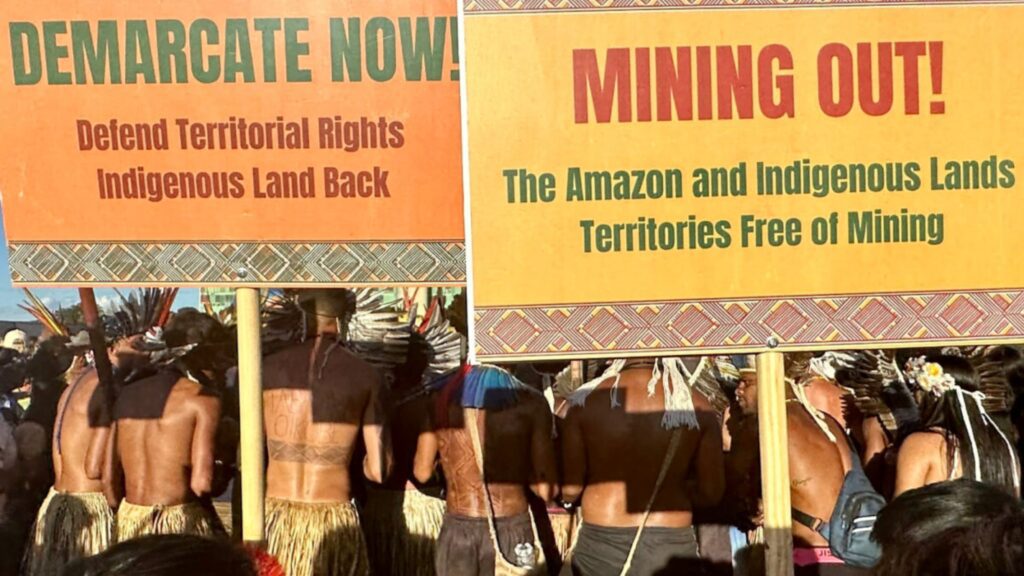
- Year Started: 1996
- Place of Origin: Oakland, California
- Founder and Leadership: Atossa Soltani
- Objectives: To protect the Amazon rainforest and the rights of its indigenous peoples.
Amazon Watch emerged in response to the escalating threats facing the Amazon rainforest and its indigenous inhabitants. Atossa Soltani founded the organization to provide a platform for indigenous voices to address environmental challenges and hold accountable those responsible for the destruction of one of the world’s most vital ecosystems.
Amazon Watch is an NGO with a primary focus on protecting the Amazon rainforest and supporting the rights of indigenous communities residing in the region. The significance of the organization lies in its commitment to addressing environmental issues, promoting sustainable practices, and advocating for the well-being of the Amazon and its diverse ecosystems.
The primary role of Amazon Watch is to act as a watchdog for the Amazon rainforest. They monitor and respond to threats such as deforestation, illegal logging, and industrial development. The organization collaborates with indigenous communities, local partners, and the global community to amplify their voices. They also advocate for policies that ensure the preservation of the Amazon and respect the rights of its inhabitants. Therefore, it occupies a position in the top 10 major environmental movements in the United States.
Activities and Initiatives
- Deforestation Monitoring: Amazon Watch employs satellite technology and on-the-ground investigations to monitor and document deforestation activities in the Amazon. This data is used to raise awareness, inform policy discussions, and hold accountable those responsible for environmental degradation.
- Indigenous Rights Advocacy: The organization actively supports the rights of indigenous peoples in the Amazon. This includes advocating for land rights, cultural preservation, and protection from the impacts of extractive industries.
- Campaigns Against Dam Projects: Amazon Watch has been involved in campaigns opposing large-scale dam projects in the Amazon. The organization works to raise awareness about the impacts of these projects and also advocates for sustainable energy alternatives.
- Corporate Accountability: Amazon Watch engages with corporations involved in activities that contribute to deforestation or violate the rights of indigenous communities. The organization urges companies to adopt responsible and sustainable practices through public campaigns and direct dialogue.
Major Achievements
- Campaign Against Chevron-Texaco: Amazon Watch played a crucial role in supporting indigenous communities affected by oil contamination in the Ecuadorian Amazon. The organization worked alongside affected communities in their legal battles against Chevron-Texaco. They are also contributing to increased awareness and accountability for environmental damage.
- Support for Indigenous Land Rights: Amazon Watch has been successful in supporting various campaigns that resulted in legal recognition of indigenous land rights. This includes efforts to demarcate and protect territories from encroachment by logging, mining, and agricultural activities.
- Opposition to Mega-Dam Projects: Their advocacy against large dam projects in the Amazon has contributed to increased scrutiny and public awareness. This includes campaigns against projects like the Belo Monte Dam in Brazil, highlighting the potential environmental and social impacts.
9. Dogwood Alliance

- Year Started: 1996
- Place of Origin: Asheville, North Carolina
- Founder and Leadership: Danna Smith, Andrew Goldberg, and John Qua.
- Objectives: To promote sustainable forestry practices, protect biodiversity, and ensure the rights and well-being of local communities. It focuses on fostering a resilient and ecologically healthy future for Southern forests.
Dogwood Alliance emerged from a shared concern among its founders about the unsustainable logging practices threatening Southern forests. They established the alliance to confront these vital landscapes’ ecological and social challenges.
The Dogwood Alliance holds profound significance as an NGO dedicated to the protection of Southern forests in the United States. The organization’s origins are rooted in the need to address the threats posed by industrial logging. In addition, it promotes sustainable forestry and advocates for the rights of communities dependent on these vital ecosystems.
The Dogwood Alliance plays a pivotal role in advocating for the conservation of Southern forests. Its mission focuses on promoting sustainable forestry practices, preserving biodiversity, and also safeguarding the well-being of communities. Therefore, it has earned its place among the 10 major environmental movements in the United States.
Activities and Initiatives
- Corporate Accountability Campaigns: Dogwood Alliance engages in campaigns targeting corporations contributing to the degradation of Southern forests. Through strategic advocacy and public awareness, the organization pressures companies to adopt sustainable sourcing practices and also cease destructive logging activities.
- Forest Protection Initiatives: The alliance actively works towards the preservation of critical forest ecosystems in the Southern United States. This includes efforts to establish protected areas and resist activities that threaten the integrity of these landscapes.
- Community Empowerment: Recognizing the importance of local communities, Dogwood Alliance empowers them to be advocates for forest conservation. In addition, they collaborate with residents and frontline communities to amplify their voices in forest management decisions.
- Climate Resilience: Dogwood Alliance connects the dots between forest conservation and climate resilience. By preserving Southern forests, the organization contributes to carbon sequestration, biodiversity conservation, and the overall health of the region’s ecosystems.
Major Achievements
- Corporate Policy Changes: Despite many challenges, Dogwood Alliance’s advocacy has led to significant policy changes by corporations. This influences their practices towards more sustainable and environmentally responsible.
- Preservation of High-Value Ecosystems: The organization’s initiatives have significantly contributed to the preservation of high-value ecosystems in the Southern United States.
- Community-Led Conservation: Their collaborative approach has empowered local communities to actively participate in the conservation of forests.
10. 350.org

- Year Started: 2008
- Place of Origin: Vermont
- Founder and Leadership: Bill McKibben and a group of students from Middlebury College in Vermont, USA
- Objectives: Advocate for climate action, promote fossil fuel divestment and mobilize global grassroots movements. They also facilitate a transition to renewable energy and empower communities.
350.org began with the launch of the International Day of Climate Action on October 24, 2009. On this day, people worldwide participated in over 5,200 events in 181 countries, all centred around the number 350. They often organize rallies and tree plantations to highlight the need to reduce carbon emissions for a sustainable climate future.
Its inception marked a pivotal moment in the fight against climate change, emphasizing a number that transcends mere statistics to embody a call for urgent action. Beyond its mission to address climate change, 350.org is distinguished by its core values of grassroots engagement, community mobilization, and a focus on the number 350 the safe concentration of CO2 in the atmosphere. The organization also envisions a world where communities unite to combat climate change through collective, impactful action. Therefore, it occupies a position in the top 10 major environmental movements in the United States.
Activities and Initiatives
- Global Campaigns: The organization engages community-led initiatives to international campaigns advocating for policies that reduce carbon emissions. The emphasis is on empowering communities to address the climate crisis at its roots.
- Global Movements and Impactful Actions: They facilitate uniting people across borders for a common cause. Its campaigns have mobilized millions worldwide, and iconic events like the Global Climate Strikes raise global awareness.
Major Achievements
- Global Agenda: 350.org has played a significant role in placing climate change on the global agenda.
- Persistent Advocacy: The movement’s advocacy has contributed to policy shifts, renewable energy initiatives, and increased public awareness.
- Navigate global climate policies: The 350 ppm target remains a rallying point for climate activists worldwide. Its commitment to grassroots mobilization often places it during debates on the balance between activism and dialogue.
Conclusion
The listed environmental movements have played a very crucial role in shaping the world. Therefore, it occupies a position in the top 10 Major Environmental Movements in the United States. However, there are many other environmental movements which play an important role in the conservation of nature.
Despite of author’s diligent efforts, there may be some movements or instances where certain aspects or points have unintentionally been missed.

